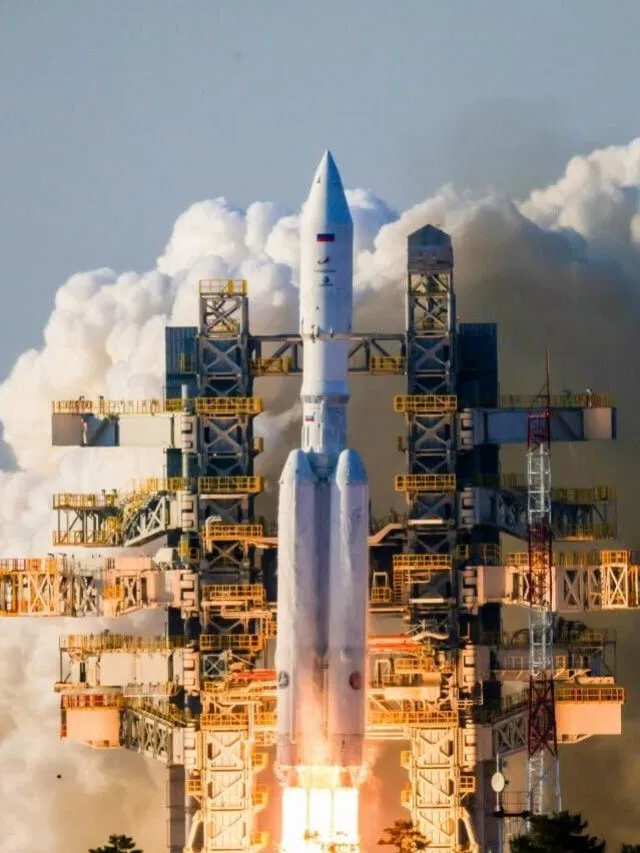Blog Credit: Trupti Thakur
Image Courtesy: Google
Angara- A5 Space Rocket
Russia has launched its Angara A5 rocket from a space facility in the country’s far east after technical glitches prompted officials to abort missions at the last minute for two days in a row.
Thursday’s launch of the new space vehicle is intended to showcase Russia’s post-Soviet space ambitions, and the growing role played by the Vostochny Cosmodrome, which is located in the forests of the Amur region bordering China.
Launch attempts were cancelled twice due to a failure in a pressurising system in an oxidiser tank and in the engine control system, according to Russian space agency Roscosmos.
Minutes after takeoff, the rocket was travelling at more than 25,000 kilometres per hour and entered orbit.
“With this launch, flight design tests of the Amur space rocket complex with Angara heavy-class launch vehicles on Vostochny began,” Roscosmos announced on social media.
“The rocket worked according to plan. The upper stage separated … and is currently putting the test payload into target orbit.”
ISS rival eyed
Russia began the Angara project a few years after the 1991 fall of the Soviet Union as a Russian-made launch vehicle that would ensure access to space even without the Baikonur Cosmodrome which it rents from Kazakhstan.
More About Angara:
Russia on Thursday test-launched its Angara-A5 space rocket for the first time from the Vostochny Cosmodrome in the Far East, successfully putting a test load in low orbit as part of an effort to develop a new post-Soviet launch vehicle.
The test launch of the Angara-A5, Russia’s first post-Soviet space rocket, was aimed at underscoring Moscow’s ambition to be a major space power and the growing importance of Vostochny, situated in the forests of the Amur region of Russia’s Far East.
But two launches of the Angara rocket were aborted at the very last minute on both Tuesday and Wednesday due to a malfunction of a pressurising system and then a problem with the engine launch-control system.
To the relief of Russian space officials, they were third time lucky on Thursday, just hours before Russia celebrates Cosmonaut Day marking the day 63 years ago that the Soviet Union’s Yuri Gagarin became the first man in outer space.
“There is an engine start, the flight is normal,” mission control said as the rocket blasted off to space, reaching more than 25,000 kilometres (15,500 miles) per hour in minutes.
“The fuel tanks detached and then the central section detached and a test load was placed into orbit,” Russia’s space agency, Roscosmos, said.
“The rocket worked normally,” Roscosmos said. “With this launch, flight design tests of the Amur space rocket complex with Angara heavy-class launch vehicles on Vostochny began.”
The 54.5-metre (178.81-foot) three-stage rocket, with a mass of about 773 tonnes, can carry about 24.5 tonnes into space, according to Russia’s Kommersant newspaper.
The defence ministry is also involved in the project, which Moscow says uses only Russian components and less environmentally damaging fuel and will replace the Proton M as Russia’s heavy-lift rocket, which has been in operation since the mid-1960s.
Russia began the Angara project a few years after the 1991 break-up of the Soviet Union as a Russian-made launch vehicle that would ensure access to space even without the Baikonur Cosmodrome, which Russia rents from Kazakhstan.
“The creation of the Angara space rocket complex (KRK) is a task of special national importance,” Roscosmos said.
“The commissioning of the Angara spacecraft will allow Russia to launch spacecraft of all types from its territory and provide our country with independent guaranteed access to space.”
The first Angara-A5 test flight took place in 2014, and another followed in 2020, both from Plesetsk in northern Russia. A partial test followed in 2021 that was a failure.
Blog By: Trupti Thakur

16
AprAngara A5 Space Rocket
Apr 16, 2024Recent Blog
Vikram 3201 & Kalpana 3201Apr 04, 2025
The Open Weight Language ModelApr 03, 2025
Asia Cup 2025Apr 02, 2025
The CrocodilusApr 01, 2025
SARATHIMar 31, 2025




